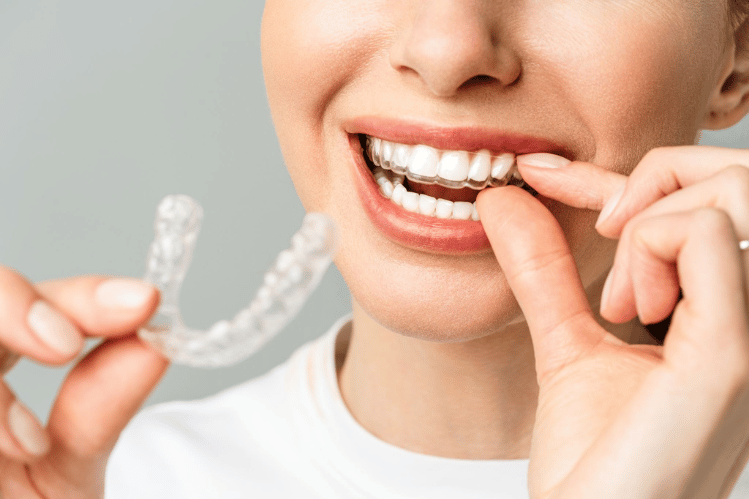The Buzz on Legacy Orthodontics
The Buzz on Legacy Orthodontics
Blog Article
The 7-Minute Rule for Legacy Orthodontics
Table of ContentsThe Best Guide To Legacy OrthodonticsThe Legacy Orthodontics PDFsFacts About Legacy Orthodontics RevealedIndicators on Legacy Orthodontics You Need To KnowUnknown Facts About Legacy Orthodontics
At Advanced Orthodontics, we provide clients with a all natural therapy experience. On top of that, we provide flexible therapy timetables, flexible repayment alternatives and a fun, enjoyable experience. clear braces. Call ( 480) 357-4900 today to learn more and timetable a visit.An orthodontist is a dental professional trained to detect, avoid, and treat teeth and jaw irregularities. Orthodontists function with people of all ages, from children to adults.
Malocclusion, or misaligned teeth, can cause dental problems, including dental caries, gum tissue disease, and difficult or agonizing eating. Not everybody is born with straight teeth. If you have a poor bite or big spaces in between your teeth, you may wish to get in touch with a dental practitioner focusing on orthodontic care.
Not known Incorrect Statements About Legacy Orthodontics
( Picture Credit Scores: DigitalVision/Getty Images) Orthodontists make use of repaired and detachable dental devices, like dental braces, retainers, and bands, to change the setting of teeth in your mouth. Orthodontic treatment is for dental irregularities, consisting of: Jagged teethBite issues, like an overbite or an underbiteCrowded teeth or teeth that are as well much apartJaw misalignmentThe goal of orthodontic treatment is to enhance your bite.
While you might believe of orthodontists as mainly for kids or young adults who require dental braces, they can fix oral issues at any age. Orthodontists participate in university, oral institution, and orthodontic school.
All orthodontists are dentists, however not all dental professionals are orthodontists. Orthodontic residency programs provide intensive, concentrated guideline for dental specialists. They concentrate on 2 locations: Just how to effectively and securely move teeth Just how to appropriately lead advancement in the teeth, jaw, and faceOnce an orthodontist has actually finished training, they have the choice to come to be board licensed.
The Main Principles Of Legacy Orthodontics
Misalignment, or malocclusion, is the most common reason individuals see an orthodontist. It is genetic and is the outcome of dimension differences in between the top and reduced jaw or between the jaw and teeth. Malocclusion leads to tooth overcrowding, a misshapen jaw, or uneven bite patterns. Malocclusion is normally treated with: Your orthodontist connects metal, ceramic, or plastic square bonds to your teeth.
Some individuals require a headwear to help move teeth into line with pressure from outside the mouth. A retainer is a custom-made device that keeps your teeth in location.
They're frequently used on children. They can create added area in the mouth without needing to pull teeth. If you have a severe underbite or overbite, you might require orthognathic surgical treatment (also called orthodontic surgical procedure) to lengthen or reduce your jaw. Orthodontists use cables, surgical screws, or plates to sustain your jaw bone.
You might require to see an orthodontist if you have: Crowding or otherwise sufficient space for every one of your teethOverbite, when your top teeth come by your base teethUnderbite, when your bottom teeth are as well much forwardSpacing or problems with gapsCrossbite, which is when your top teeth fit behind your bottom teeth when your mouth is closedOpen bite or a vertical gap between your front base and upper teethMisplaced midline, when the center of your base and upper teeth do not align Remedying a dental malocclusion can: Make attacking, eating, and speaking easierImprove the balance of our face and your total appearanceEase discomfort from temporomandibular joint conditionsSeparate your teeth and make them simpler to clean, helping stop dental caries or tooth cavities It's frequently a dentist that first notifications misaligned teeth throughout a routine exam.
Indicators on Legacy Orthodontics You Need To Know

During your very first orthodontic appointment, you'll likely have: An oral examPhotos taken of your face and smileDental X-raysPanoramic (360 level) X-rays of your face and headImpressions to develop mold and mildews of your teethThese examinations will help your orthodontist understand how to continue with your therapy. orthodontist. An orthodontist is a dental practitioner who's had training to treat your teeth and jaw
An orthodontist is focused on your bite, so something like a chipped tooth would certainly be managed by a dental practitioner. Orthodontists are focused on your bite, or the method your teeth fit together, and the straightness of your teeth.
Ever asked yourself how stars constantly appear to have perfectly lined up teeth? The solution frequently lies in the competent hands of an orthodontist. What exactly does an orthodontist do? Orthodontists are dental professionals who concentrate on remedying irregularities in the teeth and jaws. Their expertise surpasses simply creating a stunning smile; it reaches improving your overall dental health and feature.
Legacy Orthodontics - Truths

, orthodontists have a diverse toolkit at their disposal. These tried-and-true braces make use of a system of braces adhered to the teeth and linked by wires.
These detachable trays are custom-made to gradually shift the teeth's placement. In situations of slim jaws, palatal expanders can be made use of to create space for appropriate tooth positioning.
Report this page